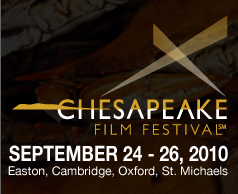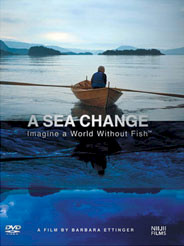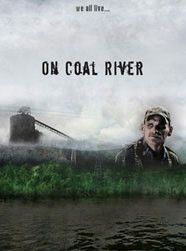Chesapeake Film Festival
Bill Dennison ·I was asked by Stuart Clarke, Executive Director of Town Creek Foundation, to participate in an energy panel associated with the third annual Chesapeake Film Festival. The panel was held at the historic Avalon Theatre in downtown Easton, Maryland, immediately following the film "On Coal River". Previously during the festival, two additional films were screened, "A Sea Change" and "Gasland", which were also included in the panel discussion. The panel included another scientist, Greg Farley from Chesapeake Community College, the mayor of Chestertown, Margo Bailey, and the filmmakers of "A Sea Change" and "On Coal River" and it was moderated by Mark Steiner from National Public Radio. He cast the panel as science, art and politics.
Each of these films focused on different topics. "A Sea Change" was about ocean acidification caused by increasing levels of atmospheric carbon dioxide, which when dissolved into seawater, lower the pH, rendering the ocean slightly more acidic. The acidity dissolves the skeletons of sea creatures that build their skeletons out of calcium carbonate. Most of the attention of ocean acidification is on tropical corals and bivalves, but this film focused on the tiny swimming plankton (Pteropods) that form the base of the food web, particularly in cooler waters. The journey of investigation taken by Sven, a grandfather and retired school teacher, as he explains his travels and what he is learning to his grandson is portrayed in the film. He travels to the Pacific Northwest including Alaska and Norway in his quest to understand this issue. He interviews climate scientists, a pteropod researcher and visits research laboratories in his journey. At the end of the film, Sven looks into alternative energy sources, including a Norwegian hotel powered by geothermal energy, solar panels atop the buildings on the Google campus, and offshore wind farms. This film is especially popular among scientists and oceanographers for the way it portrays the ocean, sea creatures and scientists.
"Gasland" was another personal journey that the filmmaker began when a large energy company offered him over $100,000 for the mineral rights to extract natural gas from underneath his property. This was his family home that his "hippie parents" built themselves. He began to investigate the methods that the energy company was going to use and learned about 'fracting', a method of fracturing oil rich shales to extract gas. The fracting process involves injecting a cocktail of chemicals into the shale (Marceles Shale under his New York State property) under pressure. The filmmaker took a road trip through Colorado, Utah and other western states to observe fracting operations. He interviewed home owners with well water that was contaminated, allegedly by the fracting chemicals. The visual highlight of the film was a homeowner who would use a cigarette lighter next to tap water streaming out of the faucet to combust the water (actually the dissolved gases in the water).
"On Coal River" did not feature the filmmakers, rather focused on a grassroots community effort to relocate an elementary school located next to a mountaintop mining operation in West Virginia. Some parents were concerned about the water quality in the school. After repeated trips to the West Virginia governor's office in Charleston without a satisfactory result, one of the activists walked from Charleston, West Virginia to the U.S. Capitol building in Washington, D.C. He met with the late Senator Robert Byrd, but like the Governor, he did not exert direct control over the local school board and could not force them to relocate the school. However, following a large explosion leading to 29 lives lost, the mining company offered to fund the construction of a new school in a different location.
Based on this diversity of films, the panel could have been labeled "Energy, climate and environment", as these issues converged. Each film involved journeys, personal and geographical, with an investigative angle. They all touched on controversial issues; climate change, cause/effect relationships, and economic tradeoffs. The filmmakers all succeeded in bringing the issues to life--and they managed to inject a human perspective. They had some quiet humor, but were mostly serious, and sometimes unsettling. They definitely were thought provoking and it was especially enjoyable to have the filmmakers on hand to answer questions and provide insights into their motivations and approaches. As a scientist, I especially enjoyed the engagement of scientists in "A Sea Change", and as an applied scientist, I also enjoyed how "A Sea Change" pivoted onto solutions after documenting the problem. I found it interesting that the energy companies have attacked "Gasland" via various websites. Clearly, this film struck a nerve. In a previous blog post, I describe the case study of a science application involving Dr. Margaret Palmer and colleagues when they published a review paper of mountaintop mining impacts, appeared on the Colbert Report and the Environmental Protection Agency denying a mining permit shortly after. This case study focused on the science so it was nice to see the human dimensions of the issue portrayed in "On Coal River".
About the author
Bill Dennison

Dr. Bill Dennison is a Professor of Marine Science and Vice President for Science Application at the University of Maryland Center for Environmental Science.





